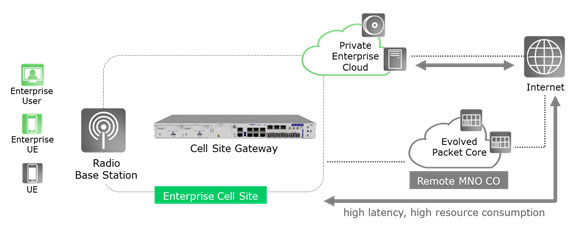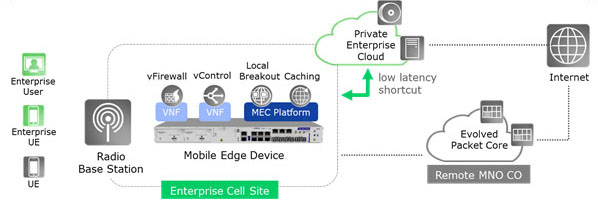Different Routes to Openness in Fixed and Mobile
Fixed and mobile networks have historically differed in the way they are standardized, regulated, designed and implemented – until today. The advent of technologies such as NFV and SDN is driving them towards convergence, resulting in the Mobile Edge Computing (MEC) initiative.
The first big difference in fixed and wireless networks is in how they are regulated. Historically, regulation has mainly been applied to incumbent network operators and their fixed networks. Unbundling of communication services and opening up service segments to other operators was the regulatory path to opening those networks to competition.
The situation with mobile operators has been different. Regulation in many countries controlled access to spectrum in a way that created a competitive mobile services market. The result was that mobile service providers could not develop a market-dominating position.
The next difference is in how the networks have been implemented. Fixed networks are composed of a wide variety of network elements from myriad suppliers, and are designed in a way that allows them to interconnect with other providers. This resulted in a need to implement standardized interfaces at various levels of the service value chain. In contrast, mobile networks are quite monolithic in nature. Frequently, a single vendor is applied per network region in the radio access network, while a single supplier delivers the mobile core networks – frequently even being outsourced to a mobile network equipment supplier with a strong services offering.
Fixed network providers consider NFV as a means to improve the way they design and implement networks as well as a means to rapidly introduce new services on top of an open, virtualized network architecture. Mobile network operators seem to have taken a more conservative approach to NFV which primarily addresses the implementation aspects rather than service innovation. For example, the virtualized evolved packet core (vEPC) is mainly a different way of implementing a mobile packed core network rather than a platform for service components.
Virtualization of network functions must not be confused with the concept of virtual mobile networks, which refers to sharing of mobile network resources. A mobile network operator leases network resources to a mobile virtual network operator (MVNO). “Virtual” refers to the fact that end-customers experience a mobile network despite the fact that the MVNO does not operate a physical mobile network.
ETSI’s MEC Initiative
ETSI established the MEC industry specification group in late 2014. This group has the objective of enabling operators to open the radio access network (RAN) for hosting of mobile edge (ME) applications developed by third-party software companies. Hosting those functions at the edge, close to the user equipment, significantly reduces latency, increases bandwidth, and prevents congestion in the mobile backhaul or mobile core network. Such change in architecture removes limitations that were introduced with the voice-centric initial network design. Real-time access to radio resources is the foundation for a wide range of new services and service capabilities which are crucial for the internet of things (IoT) and automation.
MEC has the potential to transform mobile networks into an open architecture, a process which is already happening in fixed networks with the emergence of SDN and NFV. The value of openness in mobile can nicely be explained with a MEC ETSI proof of concept (PoC), which is being showcased by Saguna Networks and ADVA Optical Networking at the MEC World Congress in Munich in September 2016.

Figure 1: Traditional Mobile network (change network element; this should be a ProNID device)
With current mobile architectures, traffic from a radio cell site is backhauled into the mobile core network. Business customers can then interconnect through the internet or dedicated bandwidth services, as shown in the figure above. Even if a radio base station is located on the customer premises, the traffic goes all the way through the core network, adding considerable latency as well as consuming excess network resources.
MEC PoC Enterprise Services
ETSI’s MEC PoC 5 “Enterprise Services” provides a local, direct connection from a mobile radio base station to the enterprise LAN. Located at the enterprise cell site, the MEC platform can host enterprise appliances and break out traffic to the colocated IT infrastructure. This approach significantly reduces latency, opening up a seamless path towards a truly mobile workforce with fast access to enterprise IT resources. It also minimizes traffic in the backhaul network. The demonstration is based on the ETSI MEC architecture and verifies the applicability of MEC with this advantageous enterprise services use case.

Figure 2: ETSI POC 5 – Providing a Local Handoff for Enterprise Services
The MEC architecture allows hosting of ME applications utilizing the capabilities of a MEC platform, such as access to radio resources, fine granular data plane information including traffic filtering and routing, caching capabilities and local DNS proxy, among others. Third party appliances can make use of those resource to create new services which can be instantiated instantly on demand.
Many Benefits From Open Compute Platforms at the Mobile Edge
The ETSI MEC PoC demonstration builds on Saguna Networks and ADVA Optical Networking’s MEC platforms. This new generation of edge computing devices for hosting of virtual network functions (VNFs) and ME applications combines the capabilities of traditional service demarcation devices deployed at cell sites with advanced network features, such as synchronization delivery, encryption, IP features and programmability. The comprehensive feature set enables mobile network operators to replace multiple devices with a single network element. This unleashes a wide range of new business opportunities and also potential for cost savings. A mobile edge compute device can:
- Host ME applications at the edge of the mobile network for low-latency services, such as time-critical IoT and industrial control applications
- Offload the mobile backhaul and mobile core network by pre-processing, caching of user data or by breaking-out user traffic at the edge of the network
- Combine VNF and ME application hosting on a single edge compute device for maximum flexibility in provisioning and assuring mobile services as well as the connectivity network in 3G, 4G and beyond
- Combine hardware-based acceleration with compute resources for highest performance of edge computing as well as offloading of compute resources from standard connectivity functions, such as OAM as well as security
- Replace multiple cell site devices, such as demarcation devices, cell site routers and compute devices, with a single edge device for connectivity and VNFs as well as ME application hosting
- Use VNFs for automated service activation and testing of the connectivity network as well as the mobile network, as shown in a joint showcase with Spirent at MEC 2016 earlier this year
- Deliver and assure highly precise frequency as well as time and phase synchronization
- Secure the mobile edge with multiple security controls, such as low-latency Ethernet encryption and a tamper-resistant design
MEC is on its way to redefining how services are implemented in mobile networks. As technologies and standards mature, early PoCs showcase the potential benefits. The first ETSI MEC PoC Zone at the MEC World Congress in Munich is a great opportunity to learn more about those emerging business opportunities. Here you can experience the power of mobile edge computing but also understand the benefits of combining hosting capabilities with physical network functions for highest performance.
